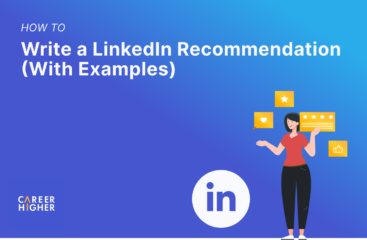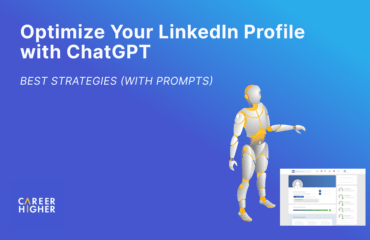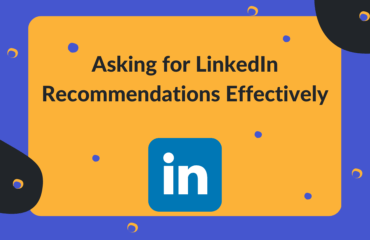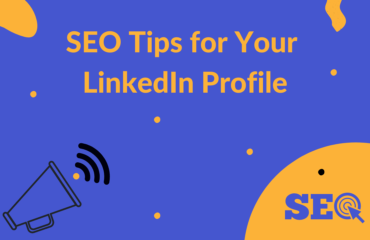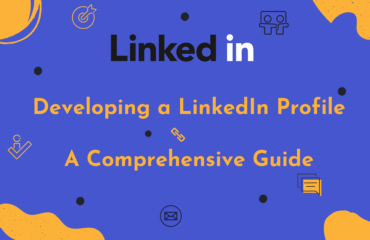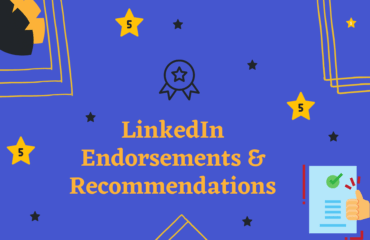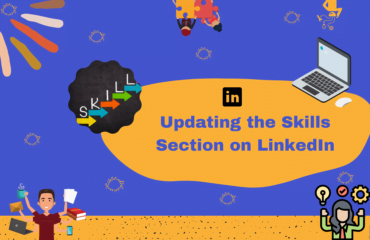Table of Contents
- 1. Align your headline with your target industry
- 2. Demonstrate your passion for working in the target industry in the ‘About’ section
- 3. Demonstrate how you can add value to your experience section
- 4. Add all relevant licenses and certifications
- 5. Add relevant skills based on the target industry
- 6. Showcase expertise in the activity section
Changing careers is a time-consuming process. It requires effort, the right resources, and an effective strategy. When making a career shift, your resume, cover letter, and LinkedIn profile play a crucial role. While we have talked about how to optimize your resume and cover letter in other articles, we will be discussing how to effectively update your LinkedIn profile when changing careers in this article.
But first, let’s see if all job changes require you to update your LinkedIn profile. If your current job’s duties and responsibilities are not different from the job you target, you may keep your profile as is or make some minimal changes. However, if the scope of work of your target position is different, then you need to update your LinkedIn profile. Let’s have a look at some of the changes you need to make to your profile below.
1. Align your headline with your target industry
Your LinkedIn profile’s headline is probably the first thing recruiters see on your profile. Even when your profile is listed on the side under the ‘People also viewed’ or ‘People You May Know’ section, it is your headline that is visible. This is what brings them to your profile. So it is essential to update your headline when you are planning to switch careers.
The character limit for your headline is 220 characters. Nonetheless, you have a lot to communicate in very few words. To begin with, make sure your new headline is aligned with your target role and industry. Focus on your previous transferable skills and experience and add this to your headline. Identify how you can use storytelling to convey your story efficiently in order to make an impact.
For example, you are currently working in a digital marketing role but are looking to move to an employer branding role. In this case, instead of adding ‘digital marketer’ or your current job title in your headline, you can go for something along the lines of “I help organizations attract the right talent through best practice employer branding”. Moreover, add any new certifications in your headline that may help you stand out from the crowd. For example, if you are planning to move to the HR industry, adding a certification or title from the CIPD such as Assoc CIPD can strengthen your profile. You can also add any educational details that may help you gain a competitive edge. For example, higher education details like MBA or MSc.
2. Demonstrate your passion for working in the target industry in the ‘About’ section
The next section that you should update is your ‘About’ section. It gives the reader more information about you as a professional. This is a crucial section as it may motivate the visitor to move further in your profile or away to the next prospect. In this sense, You can think of this section as a pitch for your visitor.
Start by adding the most relevant achievements from your professional history, allowing them to learn more about you. Additionally, this is the best spot for you to demonstrate your enthusiasm and passion for working for your target industry. So once you have given a general idea about yourself, talk about your interest in your target industry. Additionally, talk a little about any related roles at a high level, whether part-time or contract-based, even if they weren’t your last job. This will reflect that you have some exposure to the target industry. Make sure you do not get into detail at this point, as you will be talking about them later in the experience section.
For example:
“I am a creative, agile, and trustworthy Head of Marketing with 20+ years of success in orchestrating brand strategy, new brand launches, multi-channel marketing campaigns, and development and execution of personalized marketing programs.
While my expertise is industry agnostic, I have served in many different capacities as a marketing leader for private equity companies. Through these diverse experiences, I have cultivated a comprehensive understanding of how to convert consumer insights into transformational business opportunities.
I have delivered high net revenue growth in competitive markets, built strong brand equity, and led multibillion-dollar M&A transactions. As a passionate and resilient leader, I have played a critical role in turning around business and brand performance in months on multiple occasions.
My goal is to leverage my in-depth marketing and commercial expertise to help companies accelerate their brands and marketing capabilities to the next level. My approach combines innovative thinking with market data insights to translate marketing activities into impactful business results that contribute to the organization’s success.”
3. Demonstrate how you can add value to your experience section
Whether it is on your resume or your LinkedIn profile, the experience section should be fact-based. So when you are planning to move to a new industry, there wouldn’t be a lot to update here, right? Well, you are partially right. While you cannot add any experience that you do not possess, you can always tailor it while also demonstrating your ability to achieve relevant results that will help you add value to your new role. Let’s start by understanding how you can tailor your experience section.
To do this, we suggest identifying what is relevant to your target roles. For example, you are currently employed in a marketing role where you worked on marketing campaigns, SEO, email marketing, and content marketing. However, your target role is being a content marketer. In this case, you can focus mainly on your content, SEO, and email marketing role, like these, which would be the most related to your target job. So, earlier your experience could have looked like the below:
“I spearhead content lifecycle management while facilitating the flow of articles based on the business needs. My core responsibilities include writing and editing articles, creating engaging pictures and infographics for all articles, and publishing articles weekly on the company website. Additionally, I manage and maintain the company website and drive training initiatives for new writers. This has enhanced website traffic by X% and generated Y% leads through the website.”
Now, this can be broken down into the following:
I spearhead content lifecycle management. My core responsibilities include identifying content ideas based on market research, writing 6-8 articles per month, and editing and proofreading colleagues’ work for quality. This has enhanced the average session duration by X minutes and improved the click rate by Y%.
Additionally, I lead website management. I publish 20 articles per month on the website, operate at the backend to resolve website issues, and develop new web pages based on content needs. The website ranks on the first page for high competition, and high-demand keywords, and the user experience has been enhanced by Z% in the last 6 months.
You can follow similar details for all your content-related responsibilities and create a more aligned professional experience section.
You should also optimize this section for keywords. Keywords play an important role when recruiters and hiring managers look for candidate profiles. Thus, make sure to add keywords that will allow you to appear on top in such searches. For example, if you are looking for a role of a brand manager, adding keywords like brand management, marketing, digital media, and market analysis in line with your current experience will enhance your discoverability. This experience could even be years old if required. Once these keywords bring a recruiter to your profile, your passion for working in brand management demonstrated in other parts of your profile will convince them to think of you as a potential candidate.
4. Add all relevant licenses and certifications
When you are moving to an industry with little to no related experience, it is challenging to convince target employers about your capabilities. While you can showcase your value by highlighting your previous achievements, it is not enough to demonstrate your knowledge about the target industry. So you need evidence to prove to your target employers that even though you may not have worked in the role and industry before, you have an idea about the trends, challenges, and opportunities.
To do this on your LinkedIn profile, you should update all your new licenses and certifications. This will show that you have relevant knowledge and interest in working with them. Some in-demand certifications that you can consider based on your target industry and role are:
- Project Management Certifications
- Business Analytics Certifications
- Digital Marketing Certifications
- Salesforce Certifications
- Computer Network Certifications
Some websites that you can use to identify certifications are:
5. Add relevant skills based on the target industry
Another key section that you can use to make an impact during your career change is the ‘Key Skills’ section. You should add all relevant key skills to this section based on your target job. As mentioned earlier, keywords are essential for your profile’s discoverability. Hence, optimize this section by adding 50 key skills related to your target position and industry. To identify relevant key skills, we suggest going through some job descriptions of your target job and identifying important keywords. Based on your previous experience and newly acquired certifications, you can add the relevant ones here. Apart from adding technical skills, focus on adding transferable skills to strengthen your candidature.
According to a report by McKinsey, problem-solving, critical thinking, innovation, creativity, and communication are some of the missing soft skills that employers look for in candidates. So, if you excel in these and showcase them on your LinkedIn profile, you can easily convince the recruiters about your capabilities and value. However, do not limit them to this particular section. Add them in all other sections to enhance your chances of being contacted by a recruiter.
6. Showcase expertise in the activity section
Another section that can demonstrate a genuine interest in working with a target company or industry is the Activity section. This is more convincing than others because it shows your thoughts, views, and ideas as a professional. An active activity section can help you stand out from the crowd. Additionally, this will strengthen your personal brand, which will also be visible to recruiters and hiring managers visiting your profile.
For example, you are looking to work in a content marketing role. In this case, your engagement with content marketing posts will reflect your interest in the field. Thoughtful comments and shares will convince your profile visitors of your knowledge about the domain. Some tips to help you with this are:
- React (like, support, love, insightful, curious) to different content in your target industry.
- Engage with the posts of industry experts and veterans by posting insightful comments.
- Curate and share content from your profile, adding your own views and building authority.
Career changes are crucial and need to be dealt with strategically. To optimize LinkedIn as a job search tool during a career change, it is essential to update it based on your target job. Thus, we suggest making any related changes to your LinkedIn profile to enhance your chances of being noticed by a prospective employer. If you need any help, feel free to reach out to us.



